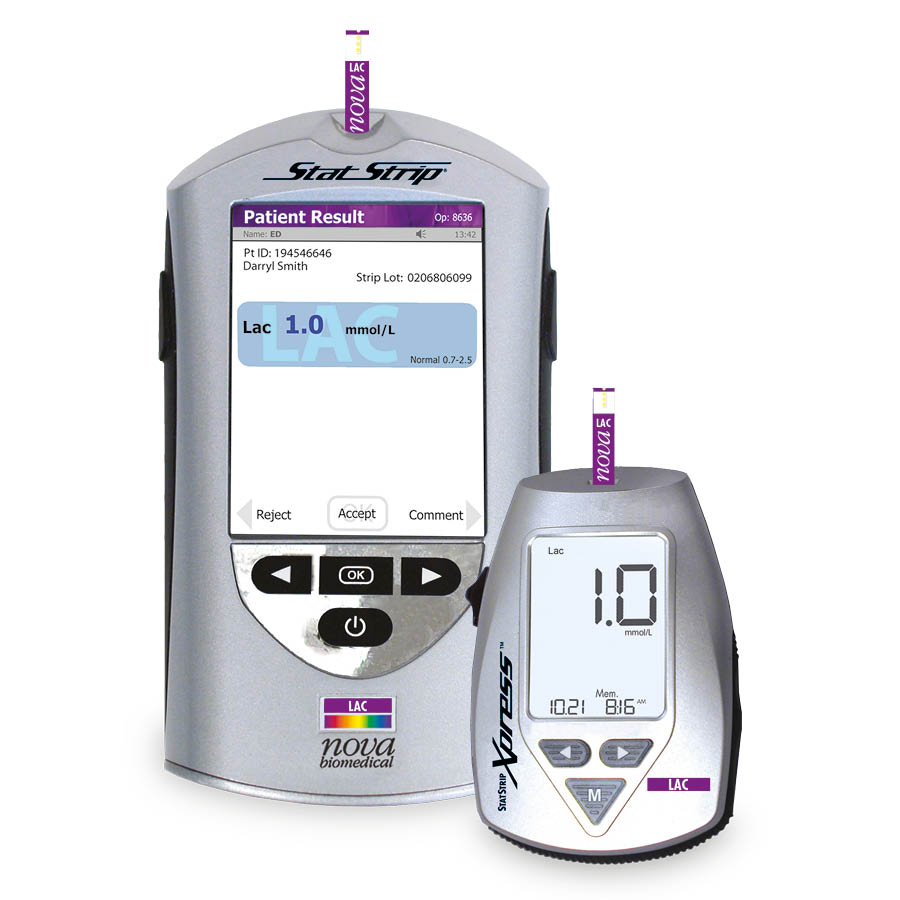Lactate - An import marker for sepsis detection.
Recognition and treatment of sepsis has become both a worldwide critical care priority and quality indicator for some healthcare systems.
In recent years, blood lactate gained wide acceptance as an early indicator in the diagnosis of sepsis and septic shock and is useful in evaluating response to fluid resuscitation.
Increases in lactate may indicate organs or other tissue are not getting enough oxygen and is used to evaluate cause of acid/base disturbance. Lactic acid production can progress to lactic acidosis. The three primary causes of lactic acidosis are sepsis, extreme blood loss, or poison.
Definitions:
Sepsis has been defined as the presence or presumed presence of an infection accompanied by a systemic inflammatory response syndrome (SIRS). Common signs and symptoms include fever, increased heart rate, increased breathing rate, and confusion. There may also be symptoms related to a specific infection, such as a cough with pneumonia, or painful urination with a kidney infection.
Severe sepsis is SIRS patients accompanied by organ dysfunction.
Septic shock exists when organ dysfunction associated with hypotension or persistent hypoperfusion after volume resuscitation.
The Surviving Sepsis Campaign (SSC) has released a new updated Hour-1 Bundle for Adults to reflect the latest evidence from the International Guidelines for Management of Sepsis and Septic Shock 2016.
https://sccm.org/SurvivingSepsisCampaign/Guidelines
SSC Hour-1 Bundle of Care Elements:
- Measure lactate level
- Obtain blood cultures before administering antibiotics.
- Administer broad-spectrum antibiotics.
- Begin rapid administration of 30mL/kg crystalloid for hypotension or lactate level ≥ 4 mmol/L.
- Apply vasopressors if hypotensive during or after fluid resuscitation to maintain MAP ≥ 65 mm Hg.
“Measured Lactate Level Serum lactate can be a surrogate for tissue perfusion (4,5). Studies have shown a significant reduction in mortality via lactate-guided resuscitation (6-10). If initial lactate is >2mmol/L, the guidelines recommend remeasurement within 2 to 4 hours to guide resuscitation to normalize lactate (6).”*
*Due to the low quality of evidence, this SSC Guideline for lactate measurement is only a weak recommendation.
- Levy B: Lactate and shock state: The metabolic view. Curr Opin Crit Care 2006; 12:315-321
- Casserly B, Phillips GS, Schorr C, et al: Lactate measurements in sepsis-induced tissue hypoperfusion: Results from the Surviving Sepsis Campaign database. Crit Care Med 2015; 43: 567-573
- Jansen TC, van Bommel J, Schoonderbeek FJ, et al: LACTATE study group. Early lactate-guided therapy in intensive care unit patients: A multicenter, open-label, randomized controlled trial. Am J Respir Crit Care Med 2010; 182:752–761
- Jones AE, Shapiro NI, Trzeciak S, et al: Emergency Medicine Shock Research Network (EMShockNet) Investigators. Lactate clearance vs central venous oxygen saturation as goals of early sepsis therapy: A randomized clinical trial. JAMA 2010; 303:739–746
- Lyu X, Xu Q, Cai G, et al: Efficacies of fluid resuscitation as guided by lactate clearance rate and central venous oxygen saturation in patients with septic shock. Zhonghua Yi Xue Za Zhi 2015; 95:496–500
- Tian HH, Han SS, Lv CJ, et al: The effect of early goal lactate clearance rate on the outcome of septic shock patients with severe pneumonia. Zhongguo Wei Zhong Bing Ji Jiu Yi Xue 2012; 24:42–45
10. Yu B, Tian HY, Hu ZJ, et al: Comparison of the effect of fluid resuscitation as guided either by lactate clearance rate or by central venous oxygen saturation in patients with sepsis. Zhonghua Wei Zhong Bing Ji Jiu Yi Xue 2013; 25:578–583
Measure lactate with follwoing system:
Networkable point-of-care test strip system for measuring lactate.


